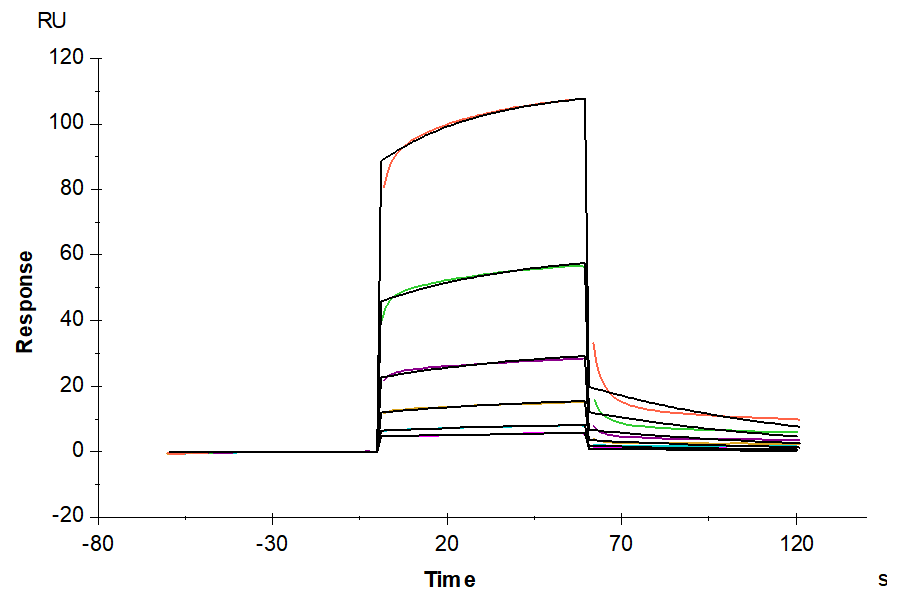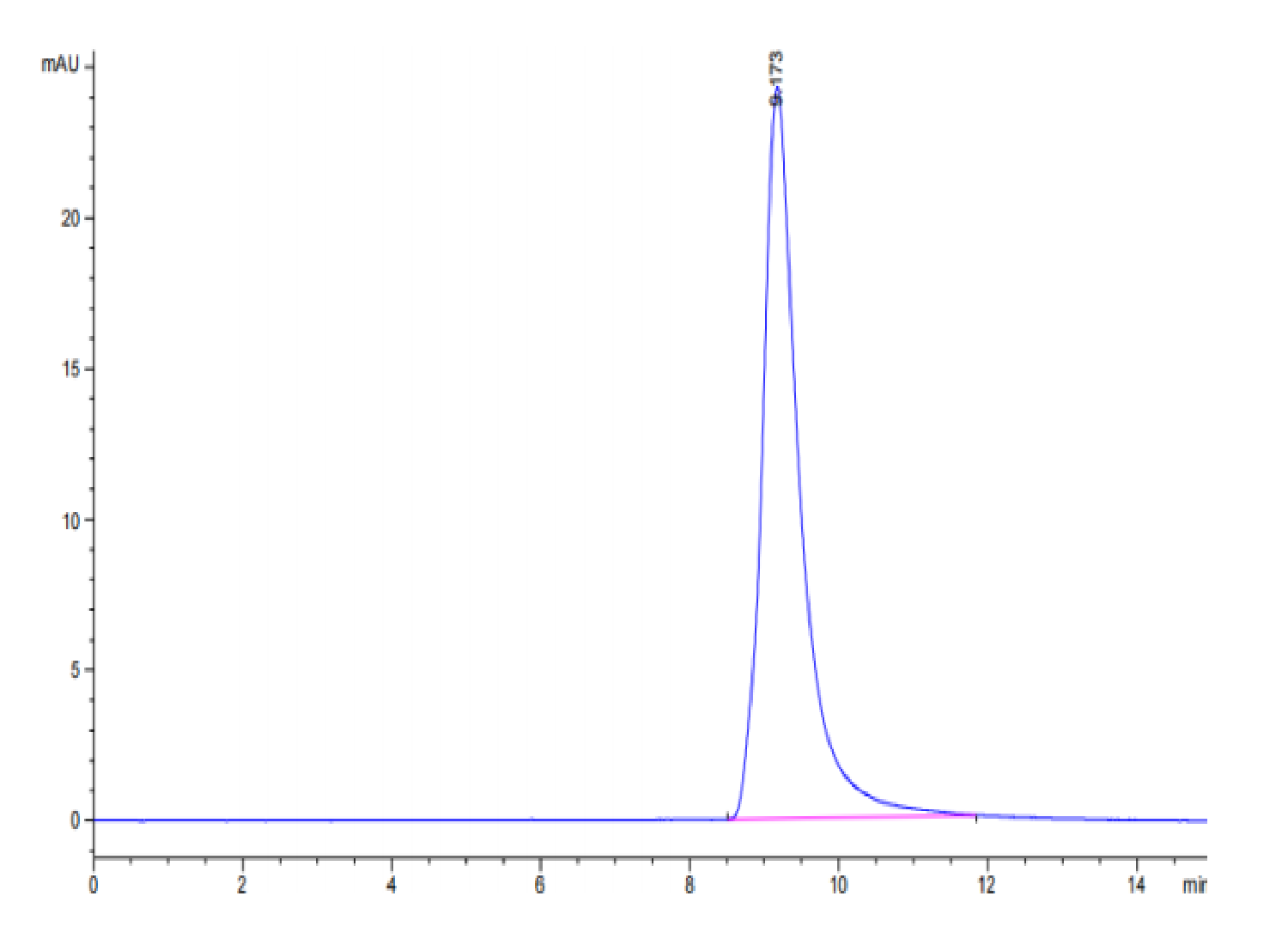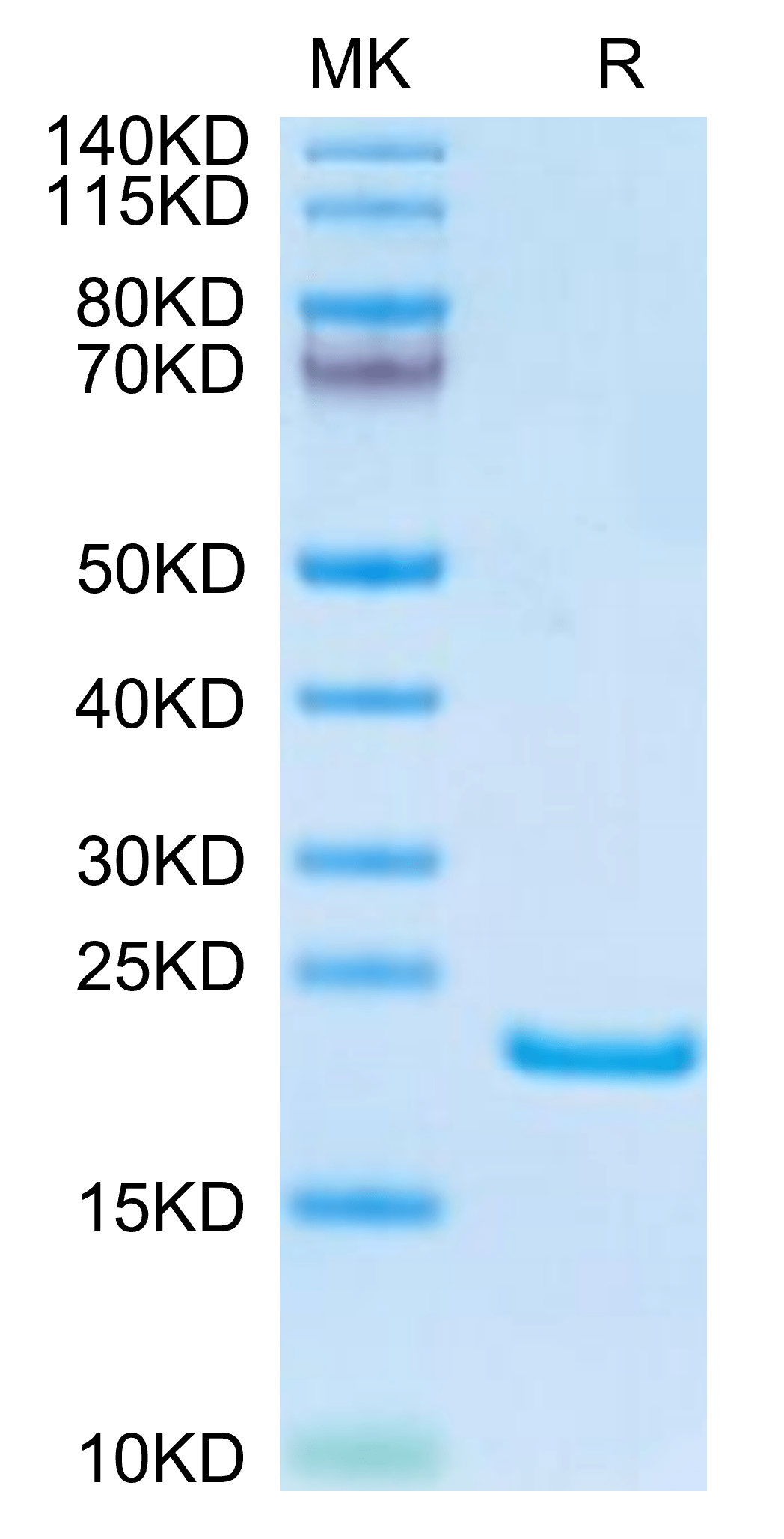| Weight | 1 lbs |
|---|---|
| Dimensions | 9 × 5 × 2 in |
| accession | NP_006399 |
| express system | E.coli |
| product tag | C-His |
| purity | > 95% as determined by Tris-Bis PAGE;> 95% as determined by HPLC |
| background | Anterior gradient homolog 2 (AGR2) is a functional protein with critical roles in a diverse range of biological systems, including vertebrate tissue development, inflammatory tissue injury responses, and cancer progression. |
| molecular weight | The protein has a predicted MW of 18.77 kDa same as Tris-Bis PAGE result. |
| available size | 100 µg, 500 µg |
| endotoxin | Less than 1EU per μg by the LAL method. |
Human AGR-2 Protein 3281
$330.00 – $1,100.00
Summary
- Expression: E.coli
- Binding assay: Yes (SPR)
- Amino Acid Range: Arg21-Leu175
Human AGR-2 Protein 3281
| protein |
|---|
| Size and concentration 100, 500µg and liquid |
| Form Liquid |
| Storage Instructions Valid for 12 months from date of receipt when stored at -80°C. Recommend to aliquot the protein into smaller quantities for optimal storage. Please minimize freeze-thaw cycles. |
| Storage buffer Shipped with dry ice. |
| Purity > 95% as determined by Tris-Bis PAGE |
| target relevance |
|---|
| Anterior gradient homolog 2 (AGR2) is a functional protein with critical roles in a diverse range of biological systems, including vertebrate tissue development, inflammatory tissue injury responses, and cancer progression. |
| Protein names Anterior gradient protein 2 homolog (AG-2) (hAG-2) (HPC8) (Secreted cement gland protein XAG-2 homolog) |
| Protein family AGR family |
| Mass 19979Da |
| Function Required for MUC2 post-transcriptional synthesis and secretion. May play a role in the production of mucus by intestinal cells (By similarity). Proto-oncogene that may play a role in cell migration, cell differentiation and cell growth. Promotes cell adhesion (PubMed:23274113). {ECO:0000250, ECO:0000269|PubMed:18199544, ECO:0000269|PubMed:23274113}. |
| Subellular location Secreted {ECO:0000269|PubMed:15834940}. Endoplasmic reticulum {ECO:0000250|UniProtKB:O88312}. |
| Tissues Expressed strongly in trachea, lung, stomach, colon, prostate and small intestine. Expressed weakly in pituitary gland, salivary gland, mammary gland, bladder, appendix, ovary, fetal lung, uterus, pancreas, kidney, fetal kidney, testis, placenta, thyroid gland and in estrogen receptor (ER)-positive breast cancer cell lines. {ECO:0000269|PubMed:9790916}. |
| Structure Monomer and homodimer (PubMed:23274113). Interacts with LYPD3 and DAG1 (alphaDAG1) (PubMed:12592373). Interacts with MUC2; disulfide-linked (PubMed:19359471, PubMed:34237462). {ECO:0000269|PubMed:12592373, ECO:0000269|PubMed:19359471, ECO:0000269|PubMed:23274113, ECO:0000269|PubMed:34237462}. |
| Target Relevance information above includes information from UniProt accession: O95994 |
| The UniProt Consortium |
Data
Publications
Publications
| pmid | title | authors | citation |
|---|---|---|---|
| We haven't added any publications to our database yet. | |||
Protocols
| relevant to this product |
|---|
Documents
| # | ||
|---|---|---|
| Please enter your product and batch number here to retrieve product datasheet, SDS, and QC information. | ||

















